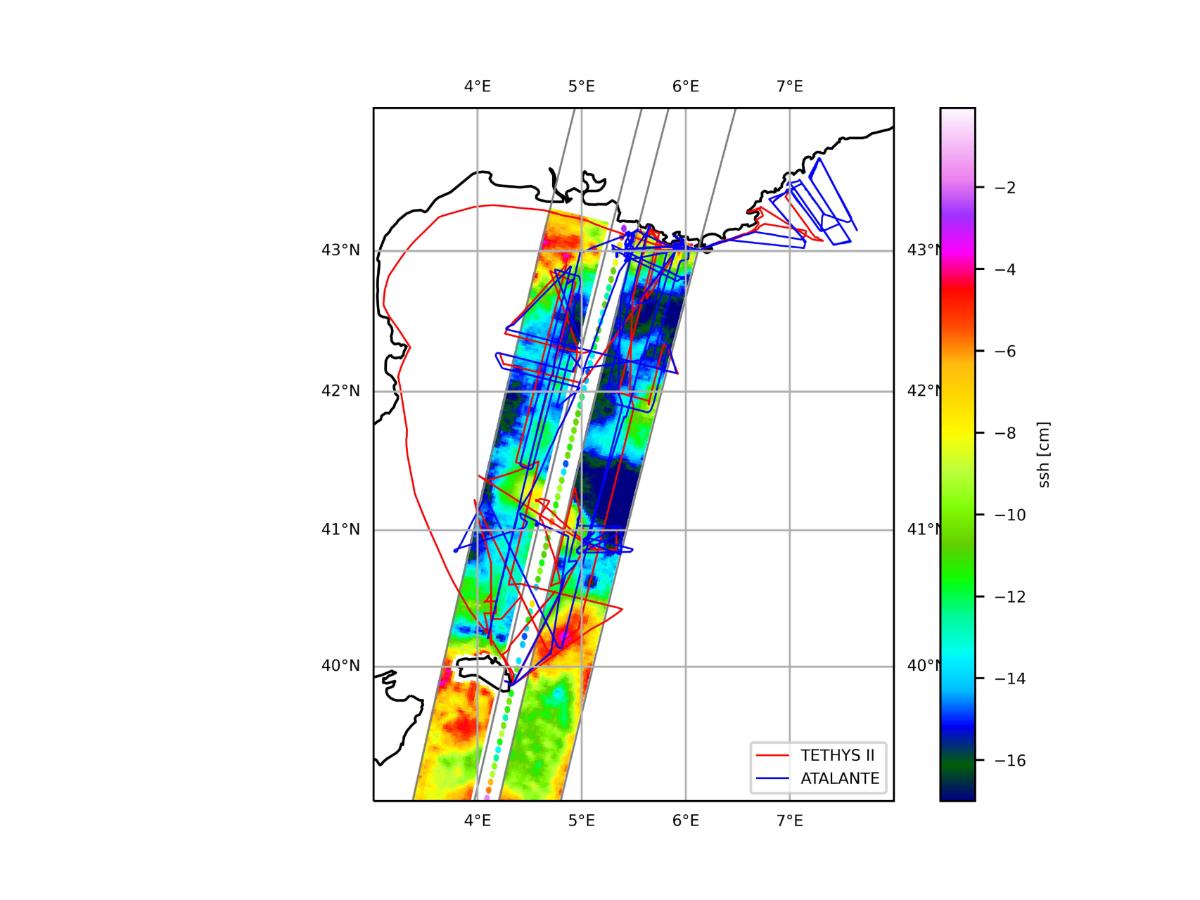C-SWOT-2023
| Type | Oceanographic cruise |
|---|---|
| Ship | Téthys II |
| Ship owner | CNRS until 2019 - IFREMER since 2020 |
| Dates | 28/03/2023 - 18/04/2023 |
| Chief scientist(s) | GARREAU Pierre  |
LABORATOIRE D'OCÉANOGRAPHIE PHYSIQUE ET SPATIALE - UMR 6523 Centre Ifremer Bretagne ZI Pointe du Diable CS 10070 29280 Plouzané +33 (0)2 98 22 42 76 |
|
| DOI | 10.17600/18002077 |
| Objective | The field experiments C-SWOT-2023 and his twin cruise WEMSWOT* were carried out in March-April 2023 and aimed to support the new-generation SWOT altimeter (NASA/CNES) calibration and validation. This satellite provides a measurement of sea surface elevation and rugosity with unequalled space-time coverage, particularly during its intensive observation phase from March to June 2023. The Ka-band Radar Interferometer (KaRin) reproduces the topography of the free surface on two 50-kilometre-wide swaths, enabling us to reconstruct ocean surface currents under certain assumptions. The fine scale processes in the range of one kilometre to few tens of kilometres - as cyclones, anticyclones, fronts or filament - potentially recorded by the satellite were observed in situ during the cruises. The daily overflight of the satellite between Marseille and Menorca was the opportunity to revisit the main known aspects of the ocean circulation in the North-Western Mediterranean sub-basin such as the North Current, the Balearic Front and the ¿eddy soup¿ in the winter convection area. The originality of the field experiment is the mobilisation of two research vessels (the R/V Thetys II for C-SWOT-2023 and the R/V Atalante for WEMSWOT) that sailed along together to explore statistics of the surface ocean dynamics (vorticity, strain, divergence) that are seldomly accessible in fine scale observations. Common transects recording at least velocities, temperature and salinity in the four hundred metres under the surface were performed in order to disentangle the geostrophic and the ageostrophic part of the circulation. To complete this approach, an intensive lagrangian experiment was also performed using Carthe or WOCE drifters and direct measurements of sea surface height using GNSS have been tried out. At the end of the cruise the potential of an unmanned surface vehicle for oceanography (the DRIX) was tested during 5 days to catch the North Current variability and related small scale variability. Figure 1: Path of the Thetys II during the C-SWOT-2023 cruise (in red). The two SWOT swaths are shown. The C-SWOT-2023 field experiment is part of the BIOSWOT-AdAC project (PI F.d'Ovidio, A.Doglioli, G.Grégori, S.Speich and P.Garreau), funded by the NASA-CNES joint call for the SWOT Science Team. *The WEMSWOT cruise took place from 2023/03/21 to 2023/04/18, was managed by the SHOM (PI : Franck Dumas ; Franck.Dumas@shom.fr) |

